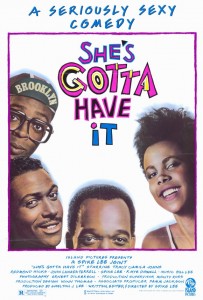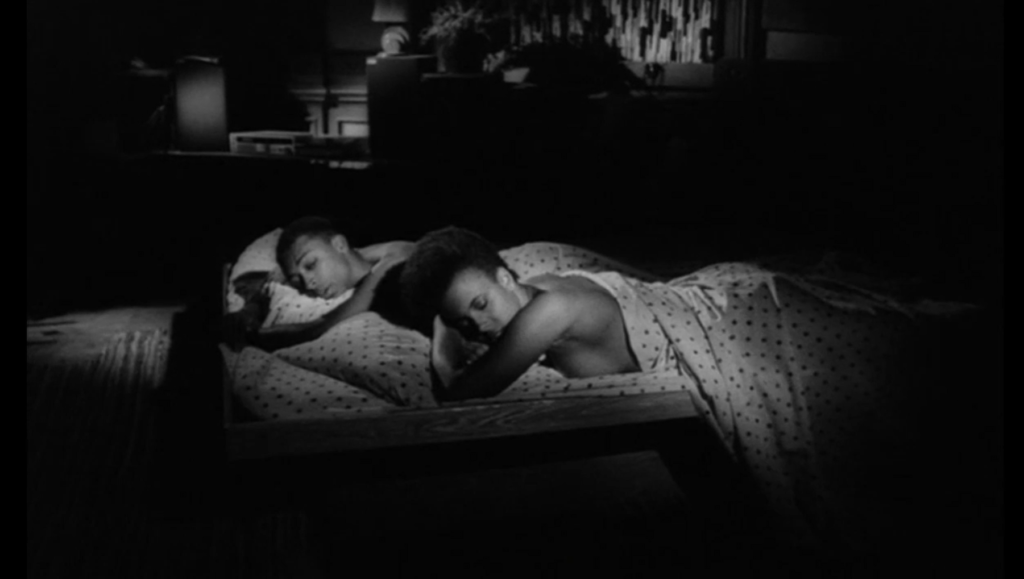“I am not a one-man woman.”
|

Synopsis:
A woman (Tracy Camilla Johns) with three lovers (Spike Lee, Tommy Redmond Hicks, and John Canada Terrell) resists being faithful to any one of them.
|
|
Genres:
- African-Americans
- Jealousy
- Love Triangle
- Romantic Comedy
- Sexuality
- Strong Females
Review:
Spike Lee’s treatment of his female protagonist in his debut film, about an independent-minded woman (Johns) who finds cumulative sexual satisfaction through her triumvirate of disparate lovers — comedic Mars (Lee), narcissistic Greer (Terrell), and sincere Jamie (Hicks) — is refreshingly respectful. He portrays Nola (Johns) as nothing but honest in her desire for sex with many men, and while none of her lovers are happy with her decision, we admire Nola for being true to herself. While the acting in She’s Gotta Have It is clearly student-film quality, we remain invested in the story given the uniqueness of these characters. She’s Gotta Have It remains a worthy predecessor to Lee’s breakthrough movie of three years later (Do the Right Thing, 1989), and is worth a look by film fanatics.
Redeeming Qualities and Moments:
- A humorous and insightful look at female sexuality

- Creative camera work

Must See?
No, though it’s recommended for those curious to see early evidence of Lee’s talents as a director. Listed in the addendum of Peary’s book as a film with historical importance and as a Personal Recommendation.
(Listed in 1001 Movies You Must See Before You Die)
Links:
|
One thought on “She’s Gotta Have It (1986)”
A tentative once-must, for its place in independent cinema history.
Until now, I hadn’t seen this since its initial release – when it had more of a genuine punch to it due to its refreshing focus on (as noted) “an independent-minded woman (Johns) who finds cumulative sexual satisfaction…”. The film itself seemed to have a certain energy and freshness in 1986.
Alas, time does not seem to have been kind to it. Seeing it again, its flaws are more apparent. Of course, some things can still be overlooked since the film’s low-budget is obvious. But what stands out against it now: the deliberately slow pacing, a need for some funnier dialogue (although much of it is charming-enough) and (overall) the lower-level of the acting. Generally, the performers are… ok. But little more than that.
As well, just about all of the female characters and performers come off better than the men. Perhaps that’s intentional but it gradually becomes difficult to understand why Nola would have much to do with any of the three men she’s seeing (unless, of course, the sex is good – which can often be a deciding factor, but personalities can work against that).
Aside from the ladies in the short sequence revealing three jealous girlfriends, I find the female characters in the film much more engaging and interesting: Nola herself (more or less; I would have liked a stronger performer), her ex-roommate (Joie Lee), her lesbian pal (Raye Dowell) and the therapist (S. Epatha Merkerson, giving the most believably natural performance).